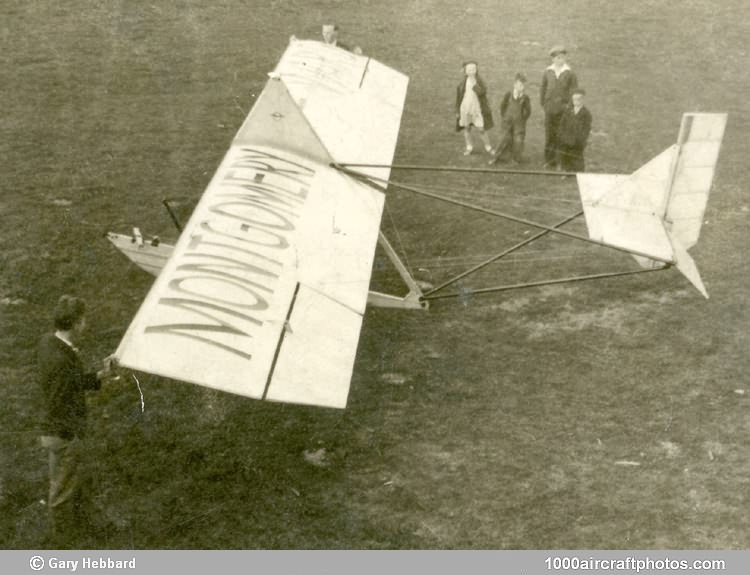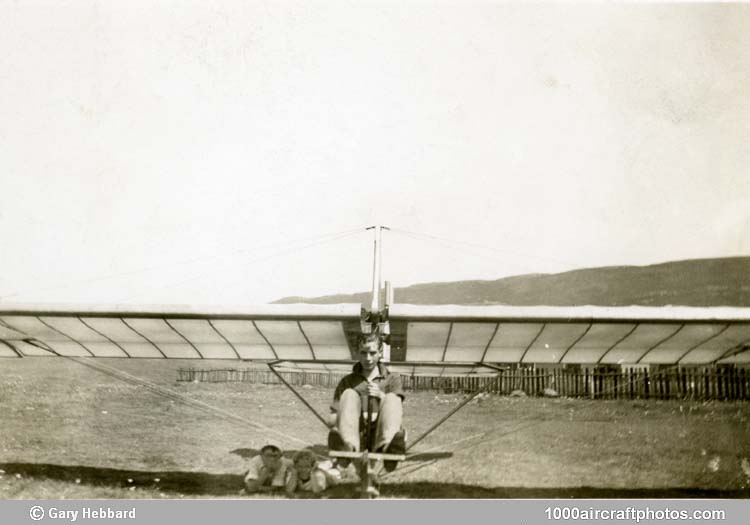Photographed at St. John's, Dominion of Newfoundland, May 12, 1938, from Jack Hebbard
02/28/2016. Remarks by
Gary Hebbard: "In 1938 my father Jack Hebbard was a 22 year old aviation enthusiast in St. John's with a keen interest in anything with wings. In 1932 he'd borrowed a motorcycle from a friend to drive to Holyrood, some 25 mls (40 km) southwest of St. John's, to see the
Dornier Do X, the revolutionary German flying boat that stopped there for refueling on its journey between New York and Europe.
He'd witnessed the overflight of St. John's by Charles Lindbergh when the Lone Eagle made his historic non-stop solo Atlantic crossing in 1927 and later had the thrill of meeting Lindbergh and his wife, Anne, when they landed on Quidi Vidi lake seeking directions to Bay Bulls Big Pond during a survey flight in 1933.
By 1937 Jack was fired enough by his passion for flight to organize a few close friends into a club with the expressed intent of obtaining and flying a glider in St. John's, an endeavour which lead to the founding of the Newfoundland Aero Club. Offices were obtained in the Oak Building at the comer of Duckworth and Prescott streets and silver pilots wings were struck for each of the founding members. Following a period of fund raising which included selling advertising space on the large white wings of the craft to the Montgomery Ward department store in the capital city, a Slingsby glider was ordered from the manufacturer in England.
Agog with anticipation, members of the club were sadly disappointed when the crated aircraft finally arrived by steamer at the St. John's waterfront in May, 1938 with damage to the tail section incurred during shipping, as reported in a
newspaper article. Repairs were necessary before the aircraft could successfully be assembled and flown and so it was fall of that year before the little craft finally took to the air. (Almost 60 years later the Slingsby glider was identified by Chris Wills, President of the Vintage Glider Club in the UK, as a Dagling, see his letter
page 1 and
page 2.)
A self taught pilot, Hebbard was the only club member to successfully fly the flimsy aeroplane, although fellow club member and lifelong friend Jack Mercer made one abortive attempt at aviating which led to a crash landing and serious, but repairable, damage. From the fall of 1938 to the departure of Hebbard, Mercer and many of their contemporaries for the battlefields of World War Two, the graceful little aircraft made 100 or more flights from Lester's field, becoming a familiar site to thousands in the city as it soared silently over the homes and businesses of the capital city, even venturing to seek the thermals to be found over the entrance of St. John's harbour as the pilot's confidence grew.
My grandfather, an accomplished carpenter, built a small shed on Lester's field to provide secure storage for the plane. With wings removed, the craft fit snugly inside the shelter until time permitted another flight. But departure for World War Two found the structure and its contents left behind in the belief that they would still be there when the citizen soldiers returned from their great adventure. Little could anyone know then that 5 weary years would pass before the world was again at peace and the young men who had left their homes as adventurous boys would return as seasoned, mature men. Nor could it be known that in 1940 that the Canadian Army would soon move into St. John's in force, looking for open space in which to build the necessary infrastructure of war and that Lester's field would prove ideal.
The exact fate of the Slingsby glider has never been determined with any certainty but it is most likely that a small shed filled with an incomprehensible assortment of wood, wire and fabric was dismantled and disposed of to make way for the overriding needs of the military. The glider likely wound up as landfill in the local dump, never recognized for what it was. Attempts over the years since to confirm or deny this theory have been unsuccessful but are being continued by our family in the hope that some day the mystery of the glider's demise will be solved. Until then, only these few photos and a selection of time worn family stories remain of the first successful glider flights to take place in the Dominion of Newfoundland.
Jack Hebbard died in St. John's in 1993 at the age of 77.

